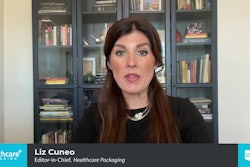
Joe Darrah is an award-winning freelance journalist based in the Philadelphia region who covers a variety of topics, including healthcare and medical technology.
Key takeaways:
- With 2024 ending, the FDA has tabulated more than 3,500 warning letters (as of mid-December) by a variety of federal offices, including the Office of Regulatory Affairs and the Center for Drug Evaluation and Research (CDER).
- Not having a structured department and that overall culture of commitment to quality throughout the company are the types of red flags that are indicative of other issues.
- Respond within 15 business days of the original letter and be specific in that response. But, don't rush to a response for the sake of beating a deadline.
Depending on one’s perspective, surveillance conducted by the U.S. Food and Drug Administration (FDA) can be interpreted as either adversarial or collegial in nature. While the reasoning for any inspection or audit is certainly to identify an organization’s failures and/or the potential for failures, the intent of any such activity is to foster collaborative quality assurance for customers and patients.
What’s not debatable, however, is that there continues to be an increased frequency of the FDA issuing inspection observation notifications (Form 483 notices) and subsequent warning letters as a result of federal quality violations and noncompliance.
According to the recent results stemming from a 4-year analysis, FDA officials are bringing forth warning letters at increasingly higher rates year over year since 2020 for both pharmaceutical and medical device products (as well as for other categories, such as biologics). With 2024 ending, the FDA has tabulated more than 3,500 warning letters (as of mid-December) by a variety of federal offices, including the Office of Regulatory Affairs and the Center for Drug Evaluation and Research (CDER).
While the impetus for each letter can vary greatly, experts and researchers say industry stakeholders can assess their current operations for common red flags to potentially avoid receiving warning letters and/or 483 notices despite the uptick by observing and understanding emerging trends. All organizations should also be informed on how to appropriately respond to any 483 notices and warning letters in the event that they are received.
Today’s Typical Triggers For FDA Violations
As the senior validation manager for regulatory affairs and quality systems at Carestream, a global provider of medical imaging systems, X-ray imaging systems, and other devices, Phyllis Fender is confident in her company’s ability to develop and maintain protocols for corrective and preventative actions (CAPA). “We have a best-in-class CAPA process,” says Fender. “We have a structured program that includes robust training around all CAPAs. I think we’ve put together some really clear requirements about what our expectations are and we do a great job of documenting any issues that arise and any corrections that we need to implement.”
And yet, Fender says that the risk of a warning letter or 483 notice is never off the table and contributes to the motivation behind the manufacturing and shipping preparations for the company’s delicate materials, including highly trafficked X-ray film that qualifies as a medical device in the United States and must be handled and transported with extreme caution.
“Our film is light sensitive and any exposure to light will cause fogging, meaning that the film is unusable,” Fender explains. “We transport the film in light-tight packaging, and we do quite a bit of testing on our packaging to make sure it’s non-reactive with the film because any packaging issue or damage would destroy the product. If we were to run into any issue like that, it would be due to a lack of due diligence in testing of the materials on our part.”
This sentiment gets directly to the core of what has served as the impetus for many warning letters observed over the last three years, particularly for pharma, says Jacqueline Berman, a partner in the FDA Healthcare Practice Group at Morgan, Lewis, & Bockius LLP, a multinational law firm that provides guidance for clients who manufacture FDA-regulated products.
“There are certain areas that stand out, especially for letters issued to re-packagers,” said Berman. “One area that we’ve been seeing in this space, as well as across manufacturing quality enforcement, is that the conduct of adequate investigations when something goes wrong is particularly important and an FDA focus. There’s an understanding that there will be things that go wrong in any process, but one area that the FDA looks for is how a company deals with issues as they arise. The FDA has issued enforcement letters when it finds that there’s a lack of adequate investigations being conducted to determine the root cause of particular issues. And, as a result, CAPAs are also found to not be adequate because the true cause of the problem is not known. The FDA expects that a company will investigate not only the specific issue that occurred, but also consider how that issue could have a broader impact.”
Other areas of concern that Berman and her colleagues see more regularly include those related to material controls and the prevention of drug product mixups, which tend to stem from not ensuring line clearance and should be of particular importance in facilities that don’t have fully dedicated lines. Other issues center around cleaning and maintenance.
“Making sure that cleaning systems and processes are validated — this is especially important for those non-dedicated lines and equipment,” said Berman. “You don’t want to be packaging a particularly toxic substance, not having adequate cleaning, and then packing another substance. That’s going to present a cross-contamination risk.” Robert Khachatryan, chief executive officer at California-based Freight Right Global Logistics, said that he and his team see similar infractions on the device side result in warning letters. “Using non-compliant materials or inadequate protection against contamination are common triggers,” said Khachatryan. “In fiscal year 2022, the FDA issued 24 warning letters for packaging issues with medical devices, underscoring the focus on quality materials and contamination prevention. Ensuring that product information is clear, accurate, and complete across all packaging can mitigate this risk.”
From a more generalized standpoint, mislabeling (or misbranding) and/or incomplete product information, especially when considering the existence of allergens, also remains a leading cause of warnings, according to David Lennarz, president at Registrar Corp, a consulting firm based in Hampton, VA, that assists companies in addressing FDA compliance and other regulatory needs. “Most FDA warning letters relating to packaging in fact relate more to the labels on the package, and not the package itself,” says Lennarz. “Be sure that all allergens present in a product are properly declared and validate any health claims rather than assuming a particular claim can be made for a specific product.”





















